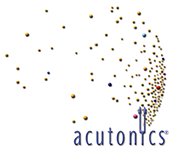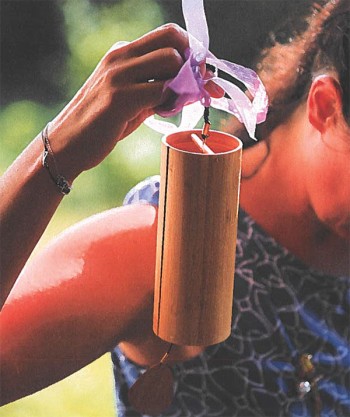By Ellen F. Franklin, PhD
Since 1995, we've been involved in the development and teaching of an integrated curriculum that trains people in the applied use of specific sound vibrations to acupuncture points, trigger points, and points of pain. Our approach to working with sound is rooted in Traditional Chinese Medicine (TCM), psychology, Western and Eastern sciences, music, and the arts, and the sounds that we work with are calculated from the universe around us. We train others to apply tuning forks, planetary gongs, hand chimes, and Tibetan singing bowls in health care, from clinical settings to their own homes.
This practice — called Acutonics® — has broad appeal because of its interdisciplinary nature, easy access, and people's love for sound and music. Acutonics can be used in the comfort of your own home to reduce the symptoms associated with stress, such as poor sleep, anxiety, frustration, and anger, and it demonstrates tremendous promise in the treatment of pain as part of an integrative, holistic health care model.
Music in Medicine
The historic use of music and rhythm in conjunction with healing transcends any one culture. References to the power of sound to elicit a physical response trace back to ancient Egypt, Assyria, and Greece. In the earliest Japanese and Chinese creation stories, as well as ancient Hindu scripture, sound was the energy that created the universe. Both Plato and Aristotle believed in the power of music to heal, and that healing the psyche through music would also heal the body. Drums, which many indigenous cultures liken to the heartbeat of the Earth, have been used for thousands of years to help break up stagnation in a person's spirit or mind, or to help root energy in the body. In aboriginal Australian culture, the didgeridoo is played to help both musician and listener feel grounded and connected within their physical bodies, and to reawaken their conscious minds.
Today, there's a growing interest in the physiological and psychological impact of music in health care. Studies from the early 1900s to the present have shown that music helps alleviate some pain and anxiety associated with surgery, decreases dental patients' need for pharmacological analgesia, and provides other immunomodulatory effects in those experiencing medical stress.
Sound and Stress
As our practitioners have begun prescribing tools to their clients for use at home, there has been a particular focus on the potential these tools hold to combat stress. Sound, as it turns out, is deeply effective for stress reduction.
Small amounts of stress, such as those which inspire us to take positive action, may help us to build resilience to common life changes. However, high conflict, loss, prolonged challenges, and natural disasters are serious stressors that can impact a person's well-being. Symptoms of stress can be obvious, manifesting as palpitations, shortness of breath, panic attacks, fatigue, insomnia, nervousness, irritability, or headaches; or the stress may aggravate or trigger pre-existing conditions, such as migraines or sciatic pain. A 2012 study identified chronic stress as the key factor in glucocorticoid receptor resistance (GCR). If glucocorticoid regulation fails, the inflammatory response increases and there's greater risk of disease. With all this in mind, it's critical that we learn techniques to address and treat stress.
At our institute, we studied nurses from a Level I trauma hospital and a large regional military hospital and medical center, all of whom were experiencing stress or compassion fatigue. We taught participants a basic acupoint protocol and instructed them on how to apply tuning forks to specific acupuncture points. They practiced twice per week for a minimum of 15 minutes each session. At the conclusion of the study, 100 percent of participants reported reduction in anxiety; 71 percent spoke of feeling more centered, grounded, and having an increased ability to focus; 86 percent reported reduced anger or frustration; and 43 percent spoke of the immediacy of the observed changes.
Self-Care with Sound
We quickly realized that the applied use of sound could include the development of self-care strategies. A Tibetan singing bowl or hand chime can be sounded to open and close a meditation or yoga practice. Or, with a simple pair of tuning forks, those at home can practice our curriculum for themselves.
As you work with and explore the use of sound, we recommend starting with the Ohm frequency, which is approximately a C sharp and has a soothing, grounding quality.
To begin your self-care session, focus your intention on reconnecting to and aligning with the natural world, and finding peace. Activate the Ohm tuning forks, hold them a few inches from your ears, and listen. Once the tuning forks stop vibrating, activate them again, and follow the points listed below in a progression. (If you don't have sound tools, you can find a quiet place, play soothing music, and gently massage these acupuncture points.) We selected these acupuncture points for their efficacy in reducing stress. Each point is listed by a translation of its common Chinese name, and then by its Western numerical location along its corresponding meridian. These names are made of characters that tell a visual story and provide a deeper, metaphorical explanation of the point and its usefulness.
1. Gushing Spring (Kidney 1):
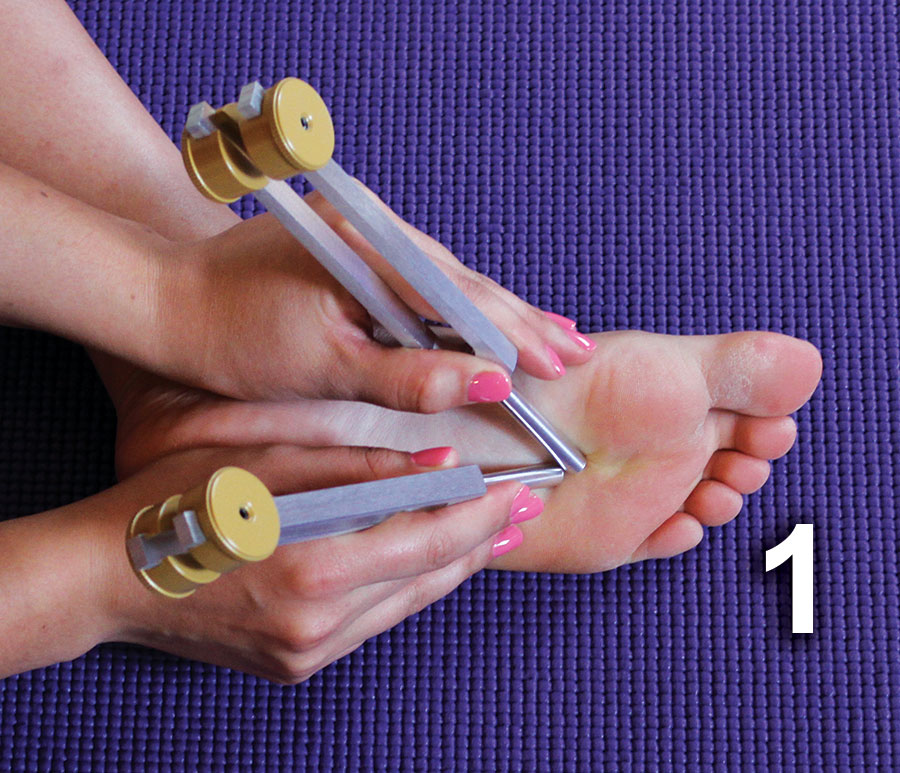 Located in the heart of the foot sole, when foot is bent and toes are curled. This point is used to bring energy down, to reduce hyper conditions, and to root and ground yourself. It can aid sleep and help you to come back to your center. Use this point to begin and end your session. Contraindicated during pregnancy.
Located in the heart of the foot sole, when foot is bent and toes are curled. This point is used to bring energy down, to reduce hyper conditions, and to root and ground yourself. It can aid sleep and help you to come back to your center. Use this point to begin and end your session. Contraindicated during pregnancy.
2. Leg Three Li (Stomach 36):
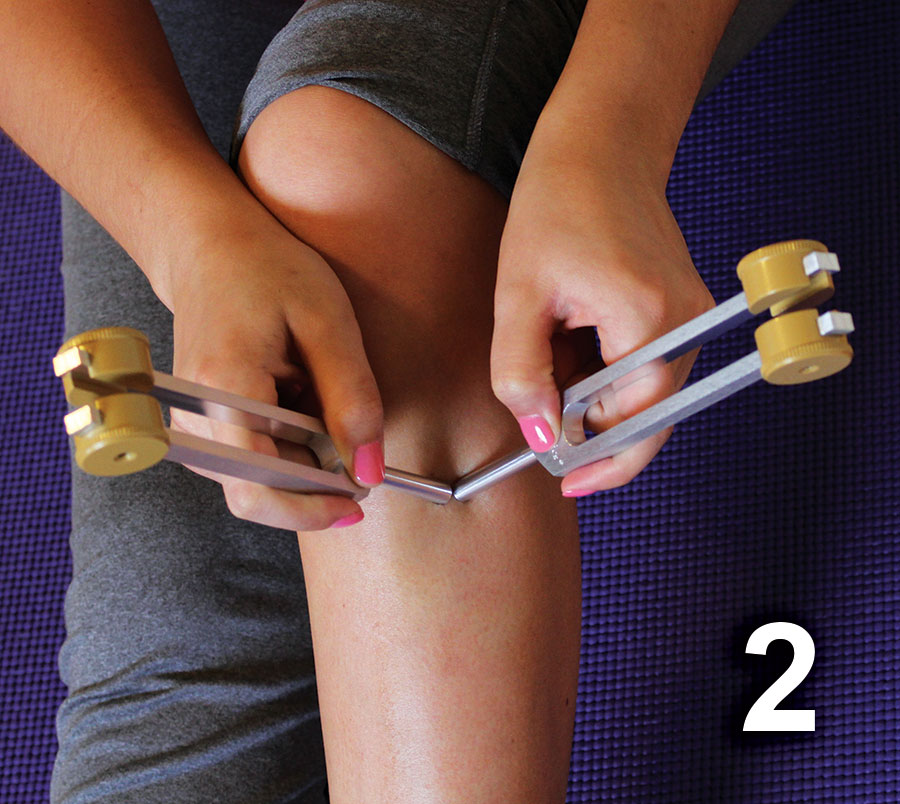 Located 3 inches below the knee on the outer side of the leg and a finger's breadth off the shinbone. This point is also known as the Lower Sea of Qi and helps to restore and move energy forward, especially when you feel stuck. It also supports the immune system. Contraindicated during pregnancy.
Located 3 inches below the knee on the outer side of the leg and a finger's breadth off the shinbone. This point is also known as the Lower Sea of Qi and helps to restore and move energy forward, especially when you feel stuck. It also supports the immune system. Contraindicated during pregnancy.
3. Inner Pass (Pericardium 6):
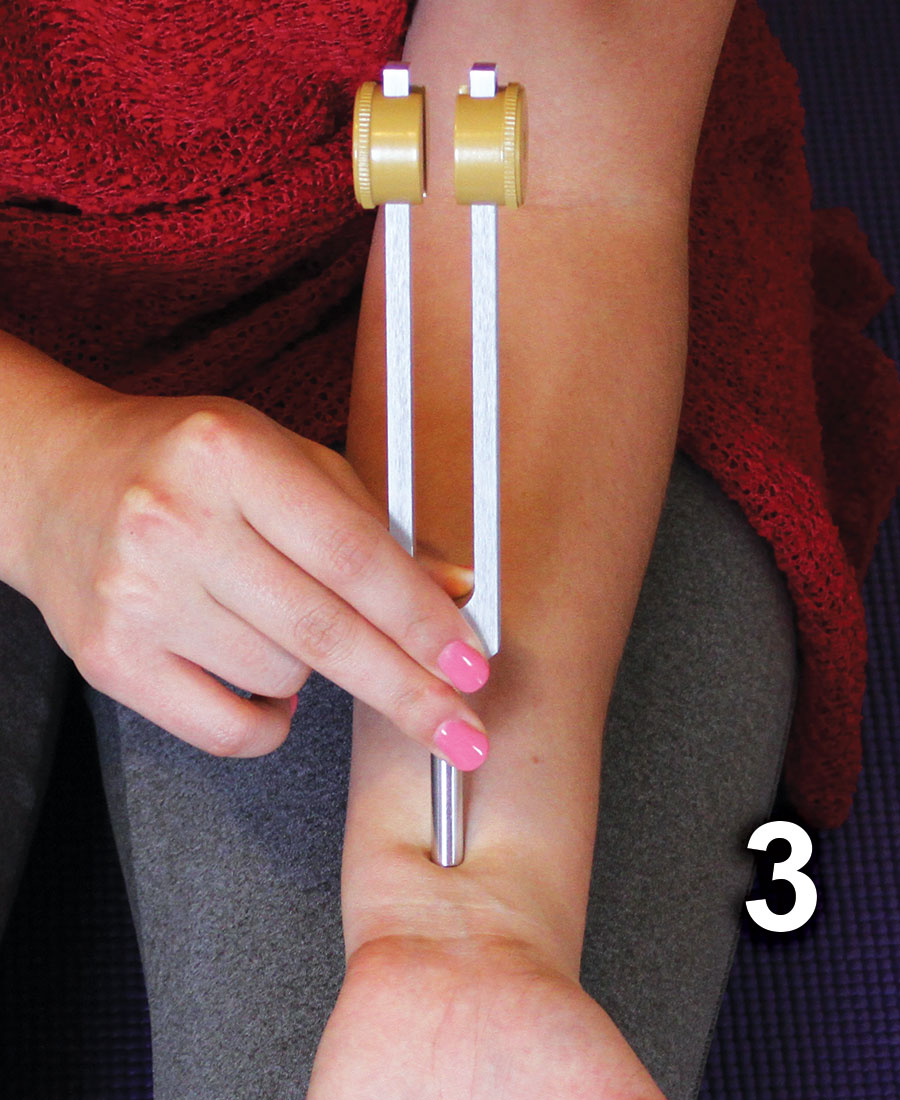 Located between forearm sinews, 2 inches from the crease on the underside of the wrist. This point is used to open the gate to the inner self, and the gate to the heart for unconditional love. It's helpful for anxiety, depression, and insomnia, as well as motion sickness.
Located between forearm sinews, 2 inches from the crease on the underside of the wrist. This point is used to open the gate to the inner self, and the gate to the heart for unconditional love. It's helpful for anxiety, depression, and insomnia, as well as motion sickness.
The following points are referred to as "The Three Treasures;' and are powerful acupuncture points. They can be used to deepen your connection to the natural world. They may help you to return to your center - a place of promise, home, and hope so you can remember how it feels to live in balance, health, and harmony. They also help create a feeling of coherence that results in reduced stress. Apply the Ohm forks to each point sequentially.
4. Origins Pass (REN 4):
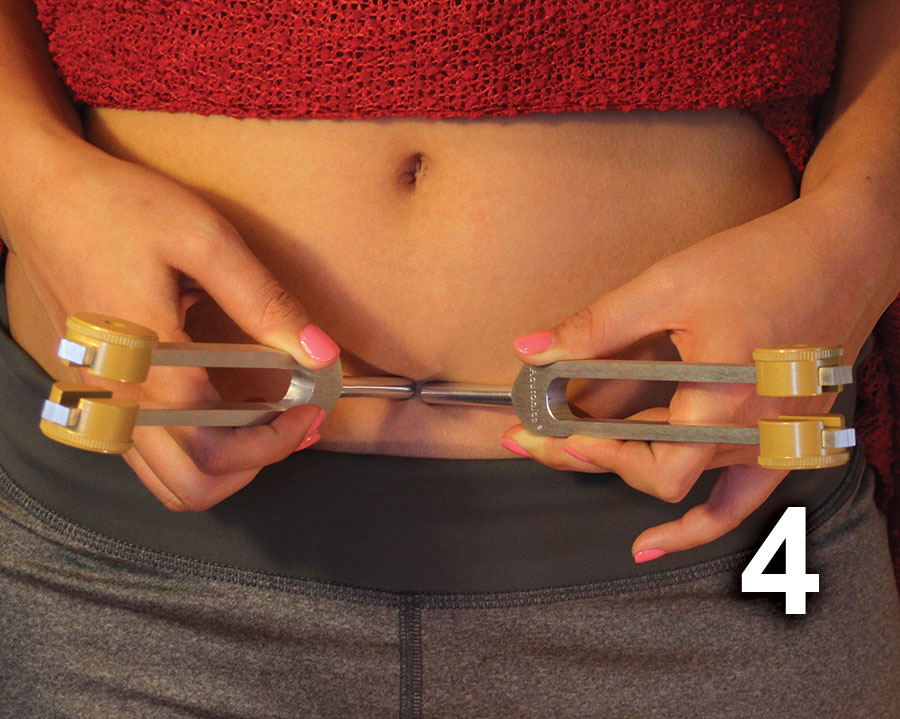 Located about a palms-width below the navel. In TCM, this is the site known as the Life Gate Fire, and it helps to energize the entire system toward center and balance energies within the body. Contraindicated during pregnancy.
Located about a palms-width below the navel. In TCM, this is the site known as the Life Gate Fire, and it helps to energize the entire system toward center and balance energies within the body. Contraindicated during pregnancy.
5. Hundred Convergences (DU 20):
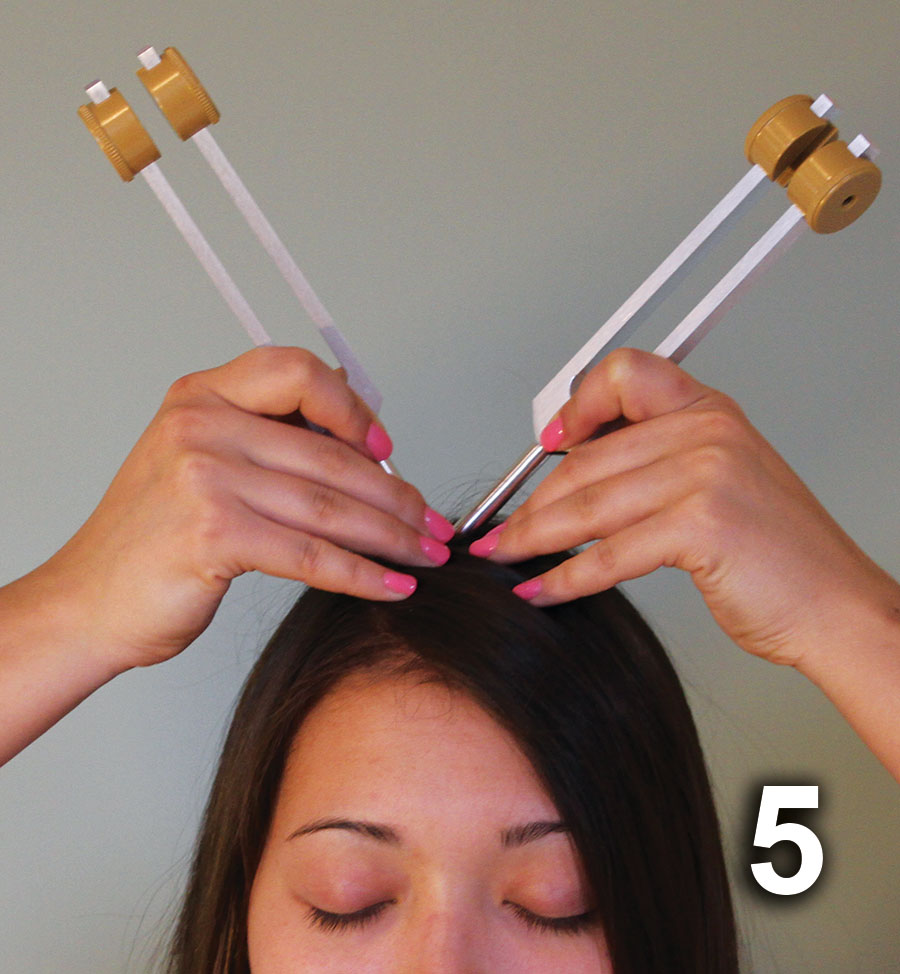 Located on the top of the head, in the depression that's in line with the apex of the ear. This point is also known as the Crown Chakra and is a powerful spiritual resource point. In TCM, it connects the microcosmos of the body with the macrocosmos of the universe.
Located on the top of the head, in the depression that's in line with the apex of the ear. This point is also known as the Crown Chakra and is a powerful spiritual resource point. In TCM, it connects the microcosmos of the body with the macrocosmos of the universe.
6. Original Child, Chest Center (REN 17):
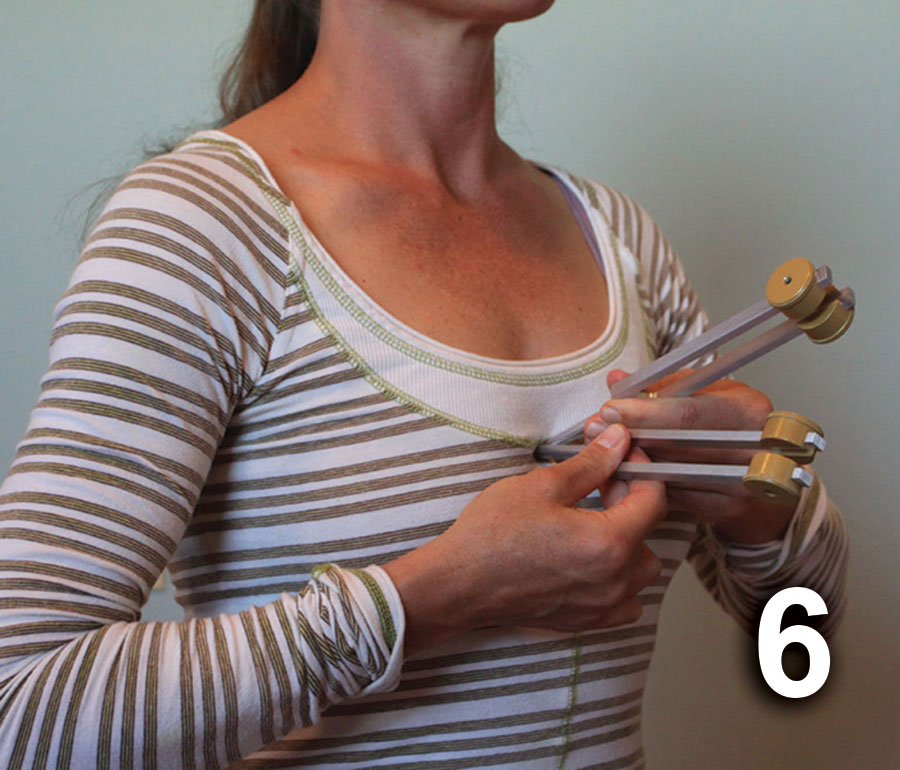 Located in the center of the chest, level with the fourth rib. This "palace of the heart" opens energy, releases frustration, and allows for synchronization of the heart and lung rhythms. It's an excellent point to calm, and to reduce the anxieties that are the result of past traumas.
Located in the center of the chest, level with the fourth rib. This "palace of the heart" opens energy, releases frustration, and allows for synchronization of the heart and lung rhythms. It's an excellent point to calm, and to reduce the anxieties that are the result of past traumas.
More than 20 years after teaching our first class in Acutonics, we're witnessing significant shifts in our patients' health. Acutonics has spread from New Mexico into a global community of practitioners and teachers with.a rich and constantly growing creative curriculum. We hope you apply these simple techniques and find your own physical, emotional, and spiritual well-being enriched.
Psycholog ist Ellen F. Franklin, PhD and acupuncturist Donna Carey, co -founded the Acutonics Institute of Integrative Medicine. Together they authored Acutonics: From Galaxies to Cells, Planetary Science, Harmony, and Medicine. Franklin and Carey can respectively be reached at Ellen@Acutonics.com and Donna@Acutonics.com.
This article was published in Mother Earth Living Magazine - July/August 2019
